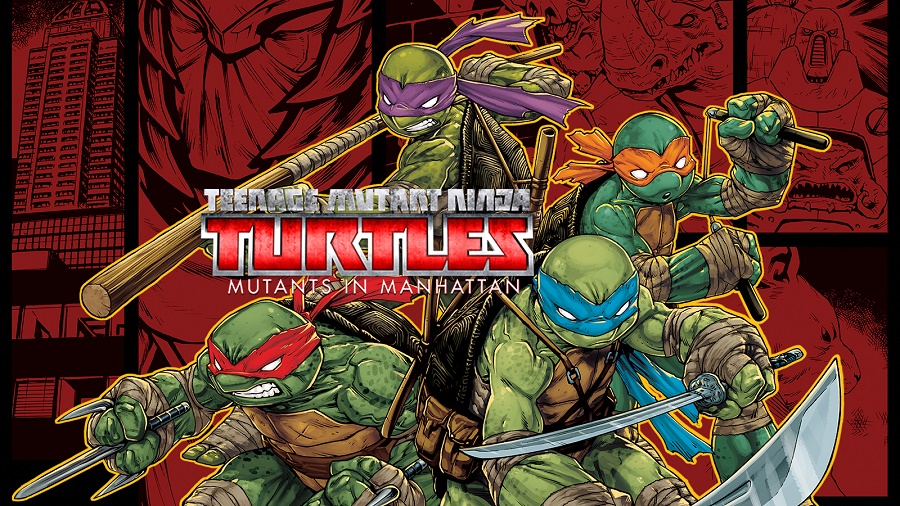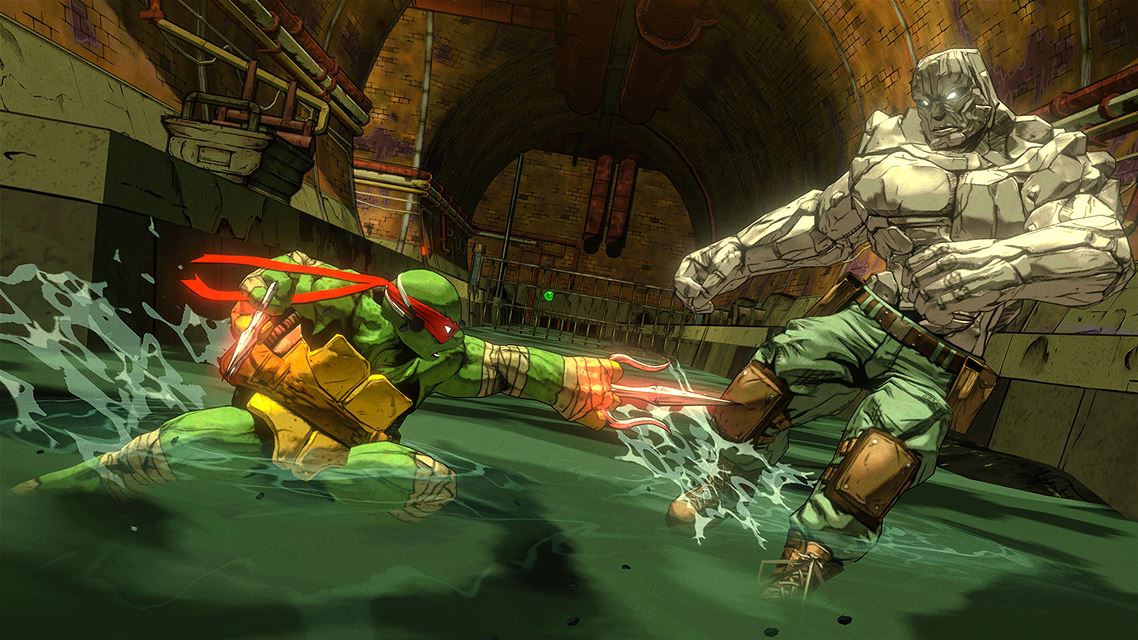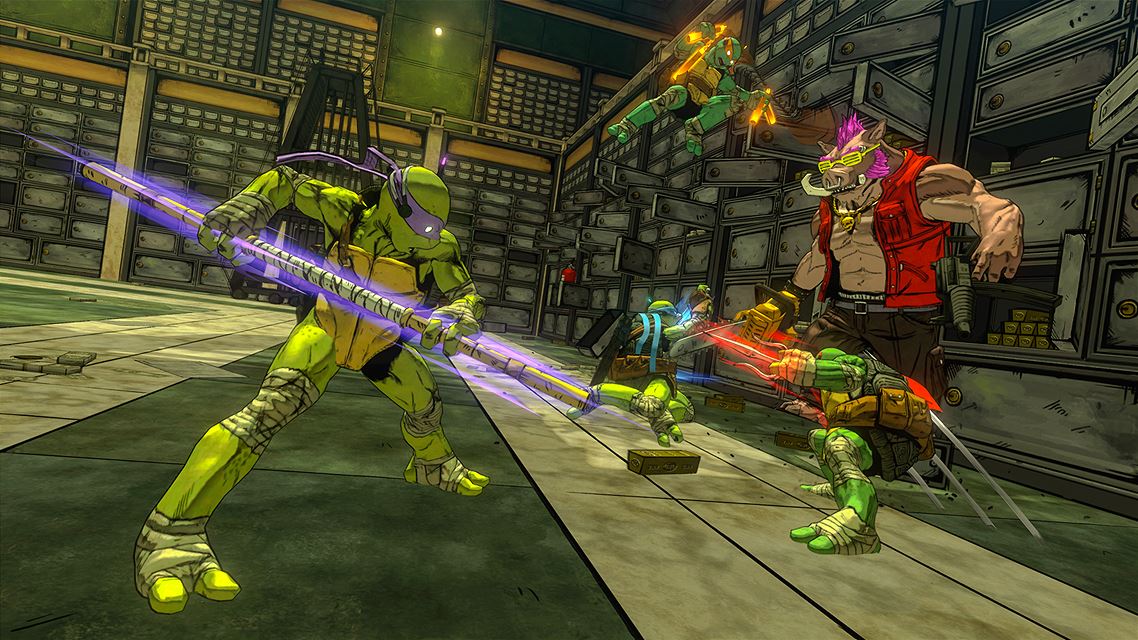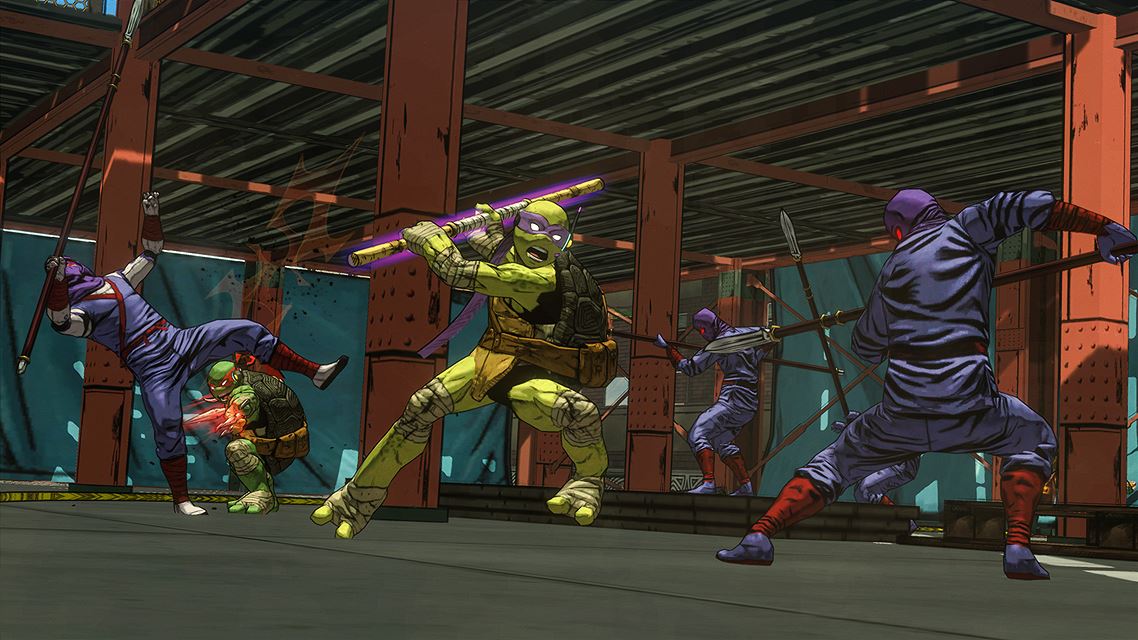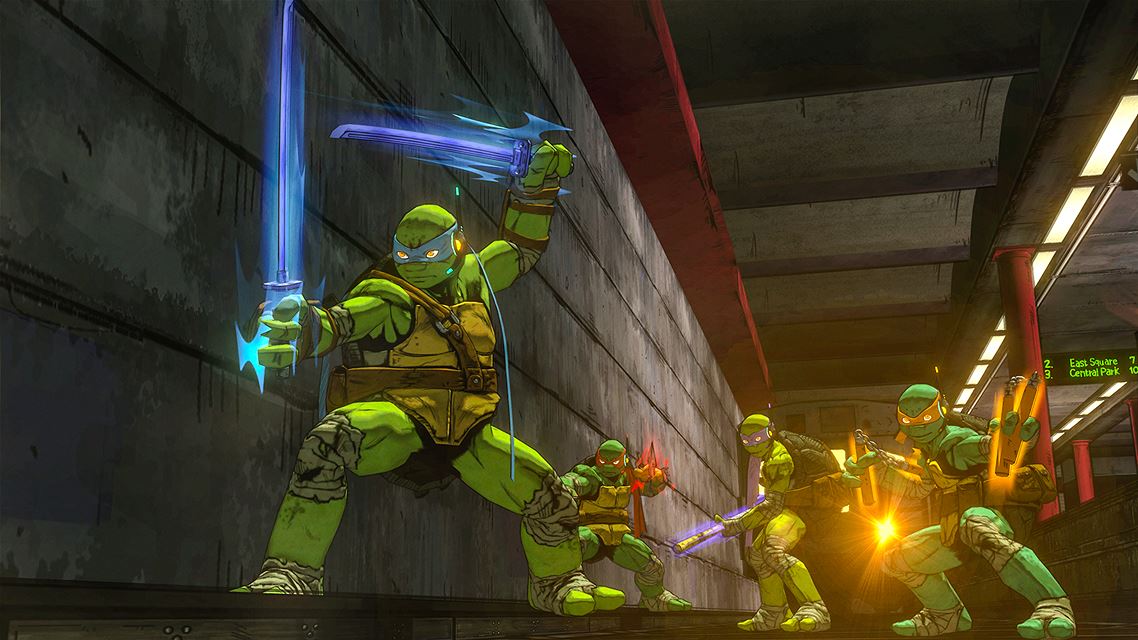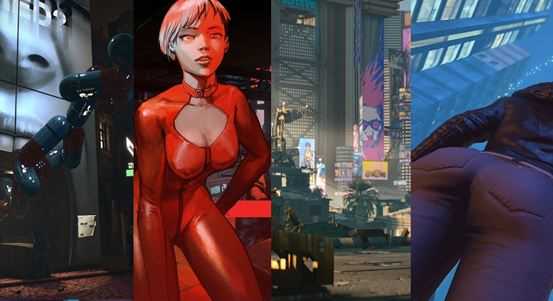There’s been quite a drought of good games for Teenage Mutant Ninja Turtles fans to play. Twenty plus years, as a matter of fact, as fans have had to go back to the 90s to find a TMNT game worth playing in the form of Konami’s classic arcade release Turtles In Time (or Tournament Fighters, if you’re a fighting game enthusiast). While there’s been no shortage of studios to pick up the license and make a go at games featuring my favorite renaissance-painter-named ninjas, none of them have really been any good. Does Teenage Mutant Ninja Turtles: Mutants In Manhattan change that? Do fans finally have a fun and engrossing way to lose themselves in the world of their favorite “heroes in a half shell” that doesn’t involve 16-bit graphics?
Nope.
It’s hard, some would even say impossible, to go into a review without some sort of preconceived notion, and this is especially true when there are so few original intellectual properties being made into video games nowadays. A lot of content I see is from a franchise, a sequel, or an adaptation of a movie, comic book, or cartoon. This is hardly a condemnation of the
“state of video games,” rather a humble admission that I went into Mutants In Manhattan very optimistically, perhaps more so than I should’ve. I love the Ninja Turtles. I grew up on them. I own every film on Blu-ray except for that travesty starring the Incredible Hulk-Turtles produced by Michael Bay, and I’ve been humming the Nickelodeon show’s theme song as I write this review. In fact, I am so hardcore a Turtles fan that I saw TMNT: Coming Out of Their Shells live in concert, and now writing that sentence has stuck the Pizza Power song in my head. I desperately wanted to like Mutants In Manhattan, but once you get past the presentation, it’s almost impossible. Now, I’m admittedly heaping on too much vague criticism without specifics, but before I dive into details, let’s get the praise out of the way first and foremost because there absolutely is praise to be given.
Mutants In Manhattan looks and sounds absolutely fantastic. The graphics, inspired by Mateus Santolouco’s TMNT artwork, are beautifully cel-shaded in such a way that they look lovingly cut straight from the pages of a comic book. Everything from the excellent character models to the detailed backgrounds feels hand-drawn with loving detail and is a treat to behold in motion. I loved the small differences each of the brothers had in their designs, too, like the top of Raphael’s mask being jagged instead of smooth, as if the cloth had been aggressively torn instead of cleanly cut to match the personality of its bearer. Michelangelo even has a more slender, lean-muscled build compared to his brothers, and Leonardo is sporting a pair of leather gauntlets you’d naturally expect to see a swordsman wear. Small details like this made me smile and really showed that the graphics team cared about bringing the characters and the world to life.
Similarly, the sound design, both the music and the voice acting especially, are top notch as well. Every one of the voice actors really nails his or her role, and the dialogue is spot on with each Turtle speaking exactly how you’d expect them to speak. Donnie spews technobabble while Raph makes his tough-guy threats, Mikey cracks corny jokes and pleads for pizza, and Leo shoots as straight as ever. It isn’t as if this is revolutionary or anything, the Turtles have been around for 30 years after all. Still, it’s welcoming to see the dialogue, in both content and delivery, accurately portray the characters I know and love, even if that shouldn’t be surprising since the lead writer for the game was Tom Waltz, who wrote TMNT comics for IDW. Expected or not, it’s nonetheless appreciated, and between the visual style, the voice acting, and the writing, the cutscenes between levels are fun and tell an enjoyable little story. Even if it’s not one that’s terribly original or deep, it gives us a glimpse at many of the other characters in the TMNT universe.
The sound effects are serviceable, and the music is fun, energetic, and catchy even if it won’t stay in your head at the conclusion of a level (although coincidentally the “level conclusion” music does stick in my head). One aspect of the music I really enjoyed, though, came during boss battles, as once you bring a boss’ health down to a certain threshold, the boss decides it’s time to get serious and the music becomes much more intense and aggressive as a result. This is signalled with an angry chord beforehand to make it abundantly clear that “Here comes the pain.” My only “complaint” with the sound design is that some form of one of the theme songs isn’t incorporated into the menu music. In a perfect world, like how each startup of Super Smash Bros. Wii U has a different version of the title theme from 64, Melee, Brawl, or any of the other versions available, it would’ve been nice if starting up Mutants In Manhattan would’ve cued the 1987 cartoon theme, the 2012 cartoon theme, or heck, even the 2003 cartoon theme. It was okay. No 2012 version but not bad. Cycling between them and other classic songs would’ve been perfect, but I imagine this will be a gripe I have of every TMNT game for years to come, so I’m hardly deducting any points for it. Hopefully the right developer will just read my griping and incorporate it in the future. Stranger things have happened, right?
Unfortunately, Mutants In Manhattan is a video game, not a film, which means all the lovely graphics and delightful voice acting in the world can’t hold together bad gameplay. I wouldn’t necessarily call MIM’s gameplay bad, but the word I’d use would probably be disjointed…which is a far cry from good. The combat is in an awkward place between a hack-and-slash, beat-em-up button masher and sophisticated action game, with neither of the best traits of either genre present. Enemies routinely gang up on you, but there’s not an intuitive counterattacking system in place like the Arkham games or Assassin’s Creed that makes group-combat enjoyable. There is a dodge/block/parry system in place based on timing, but it feels somewhat odd and perhaps out of place.
Holding the dodge button outright makes your Turtle spin in his shell and avoid damage, but holding it for too long (don’t worry, there’s a meter) will make your Turtle spin out and become dizzy and open him up to attack. Tapping the dodge button right before an attack connects blocks the attack, while holding dodge and releasing the button right before the attack connects parries the attack. Parrying the attack with perfect timing also allows your Turtle to slip behind the bad guy and piggyback ride them as a distraction, punching at their noggin while your brothers pummel them from the other sides. This is more useful and necessary in boss fights, but a few bigger enemies can be quadruple-teamed in this way as well.
The system isn’t bad, but it didn’t work well for fighting multiple enemies. While I could competently block or parry one attacker fine, the other attackers would assault me out of “rhythm” and trap me in an endless loop of blocking with no real offense. That is to say, they would have if I’d actually tried to utilize the blocking or parrying system after I realized this. One on one, the longer I used it, the more I adjusted to the mechanics, but it was outright unnecessary for 90% of the game. If I was surrounded by a group of enemies, there was absolutely no point to trying to time specific attack and block strings when I could just jump over them and go fight another enemy distracted by another Turtle…or jump over them, run away, and throw an unlimited supply of shurikens at them…or just activate one of my massive ninjitsu attacks to wipe them out…or just wait for the other Turtles to come pulverize them.
It actually startled me how effective the AI Turtles are at killing the AI enemies – I lost count of how many times they finished a boss without me or cleared a room with little to no input on my part. If you decide to run around in a circle and see how many jumps it takes to wear out that face button on your controller, your AI team will show no compunction about tirelessly chasing down and beating the crap out of every single thing that moves in a given area…no matter what. You can instruct your AI brothers to wait, protect you, or go all out, but apparently something gets lost in translation and the Turtles understand every command you give them to be “tirelessly chase down and beat the crap out of every single thing that moves in this area.” In that regard, they follow instructions very well. I wouldn’t necessarily call this bad, but it was a very surprising observation.
Of course, that’s only if you choose to fight. While the levels seem rather sizeable at first, there are only about five stops you need to make per level and the rest of the time you can just run by everything and ignore it…and no, that isn’t hyperbole. The levels are very large areas populated mostly by enemies who pop up and will attack you if you stay put…but who don’t seem terribly committed to your demise. If you just keep running to your next stop, the baddies are perfectly content to let you. They can’t (or won’t?) do anything to stop you, so feel free to simply ignore them if you so choose, as it’s startlingly easy to do so. Of course, if you do choose to run past the bad guys, you’ll probably finish the game in about an hour (and that, hopefully, is hyperbole), since even fighting nearly every single enemy I encountered and going out of my way to try to explore, I was still finishing most levels in 15-20 minutes. That time would be less disconcerting if there weren’t only nine levels in the entire game, but I digress.
You might reasonably ask yourself why you’d deliberately ignore a fight in a game about fighting, and the answer is twofold. First, some of the enemies between each “stop” you make on your way to completing a level are infinitely respawning, and second, they aren’t worth the trouble, as combat is often times more laborious than fun. For most of the bad guys you’ll be beating up, you can mindlessly smash the light attack button and progress unimpeded, and while there technically is a heavy attack button and you technically can use a combination of light and heavy attacks to perform combos, there’s no discernable reason to do so. One would suppose that the existence of lighter, quicker attacks and heavier hitting, slower attacks with a combo system of some description would mean that some enemies need to be opened up with light attacks before they can be chained into heavy attacks, but that isn’t the case.
The drastic gap in some enemies’ attack patterns is also quite bizarre, as some stare absent-mindedly at you and wait to die, some block every single attack, others make sure to send you a courtesy email, text message, and telegram alerting you to their incoming attack, and others still attack you so quickly and so suddenly that you will find your Turtle face first on the floor wondering if anyone got the number of that truck.
There’s a fun upgrade system for various styles of ninjitsu you can unlock and equip, and ninja charms that grant passive bonuses, but outside of this customization the brothers feel too much alike and don’t play uniquely enough to really make me feel like my choice of who to play was anything more than a cosmetic one based on which Turtle I personally liked the most (and the answer is Leo). It seems like Donnie should (obviously) be able to attack from father away, Raph should attack faster, Leo should do more damage, and Michelangelo should be a combo king with his nunchaku. There’s more variance in Bayonetta’s individual arsenal than in the brothers’ attack styles, which just seems confusing from a developer like PlatinumGames.
At the end of the day, Teenage Mutant Ninja Turtles: Mutants In Manhattan doesn’t quite know if it wants to be a simple-minded brawler, or a slick, action homage to titles like Devil May Cry re-skinned with reptiles. It’s tragic, really, because I know Platinum can do better. The makings of an amazing game are here, buried beneath the uncertainty, and if either style had really been committed to, it would’ve made a better overall game than the current iteration falling awkwardly between genres. Mutants In Manhattan feels like a love letter to the Turtles, but a love letter full of typos and misspellings, with the absence of local or split screen co-op and a paltry offering of only nine levels being two huge blotches of ink that blot out most of the handwriting.
Score 5/10
Review code supplied by Microsoft Xbox.
